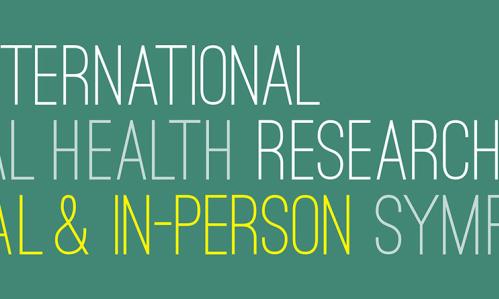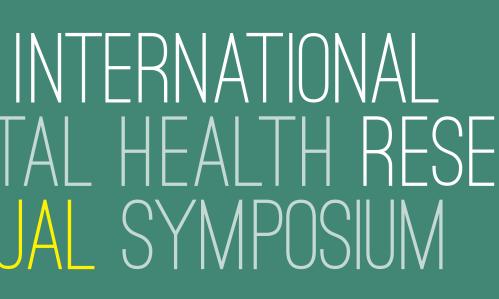Frequently Asked Questions about OCD
Frequently Asked Questions about OCD
Obsessive-Compulsive Disorder (OCD) is a common, chronic and long-lasting disorder in which a person has uncontrollable, reoccurring thoughts (obsessions) and behaviors (compulsions) that he or she feels the urge to repeat over and over.
* Source: National Institute of Mental Health
Impactful Obsessive-Compulsive Disorder (OCD) Research Discoveries by Foundation Grantees:
- Non-Invasive Brain Stimulation May Help Some OCD Patients Who Don’t Respond to Medications or Psychotherapy
45% of a group of OCD patients who had not been helped by at least one course of medication treatment did respond to treatment with dTMS, a form of non-invasive brain stimulation. The treatments were given 5 days a week for 6 weeks and were compared with a placebo version of the same treatment. - Largest-Ever Cortical Imaging Study of OCD Patients Offers Clues to Causes
Comparing MRI scans from thousands of individuals, researchers have linked obsessive compulsive disorder to certain abnormalities in brain structure. Abnormalities were found in both adult and pediatric patients. - New Analysis Finds Behavioral Therapy Should Be Combined with Medication to Relieve Severe Anxiety in Children
Although behavioral therapy or medication alone can relieve the symptoms of anxiety in children and adolescents, those whose symptoms are severe may need both. - Small Study Finds Signs of Brain Inflammation in Patients with Obsessive-Compulsive Disorder
A PET scanning study provides the first evidence of inflammation within the neurocircuitry of obsessive-compulsive disorder (OCD).
For our most recent research summaries, click here.
Obsessive-Compulsive Disorder (OCD) is a brain and behavior disorder that is categorized as an anxiety disorder in the Diagnostic and Statistical Manual of Mental Disorders, Fourth Edition (DSM-IV). OCD causes severe anxiety in those affected and involves both obsessions and compulsions that interfere with daily life. Research suggests that OCD involves problems in communication between the front part of the brain and deeper structures. These brain structures use a chemical messenger called serotonin. Pictures of the brain at work also show that in some people, the brain circuits involved in OCD become normalized with either serotonin medicines or cognitive behavioral therapy (CBT).
OCD causes severe anxiety in those affected and involves both obsessions and compulsions that interfere with daily life. Obsessions are persistent ideas, thoughts, impulses or images that are experienced as intrusive and inappropriate and cause marked anxiety or distress. The most common obsessions are repeated thoughts about contamination, repeated doubts, a need to have things in a particular order, aggressive or horrific impulses, and sexual imagery. Compulsions are the individuals attempt to suppress such thoughts or impulses or to neutralize them with some other thought or action. These can include repetitive behaviors, such as hand washing, ordering or checking on things; or mental acts, such as praying, counting, or repeating words silently.
OCD is a common disorder that affects adults, adolescents, and children all over the world. Most people are diagnosed by about age 19, typically with an earlier age of onset in boys than in girls, but onset after age 35 does happen. For statistics on OCD in adults, please see the NIMH Obsessive Compulsive Disorder Among Adults webpage.
The causes of OCD are unknown, but risk factors include:
- Genetics
- Brain Structure
- Brain Functioning
- Environment
* Source: National Institute of Mental Health
OCD can start at any time beginning as early as preschool and continuing to adulthood. Age at onset tends to be earlier in males that in females: between ages 6 and 15 years for males and between ages 20 and 29 years for females.
Research shows that OCD does run in families and that genes likely play a role in the development of the disorder. Genes appear to be only partly responsible for causing the disorder though and it is thought that it is more likely a combination of genetic susceptibility and environmental influences.
There are no laboratory or brain imaging tests to diagnose OCD. The diagnosis is made based on the observation and assessment of the person’s symptoms by a mental health professional.
OCD is typically treated with medication, psychotherapy or a combination of the two. Although most patients with OCD respond to treatment, some patients continue to experience symptoms.
Sometimes people with OCD also have other mental disorders, such as anxiety, depression, and body dysmorphic disorder, a disorder in which someone mistakenly believes that a part of their body is abnormal. It is important to consider these other disorders when making decisions about treatment.
* Source: National Institute of Mental Health
Learn about other potential treatment options for OCD:
Currently, there is only one type of medication that has been shown to be effective in treating Obsessive-Compulsive Disorder (OCD). Serotonin Reuptake Inhibitors (SRIs), including clomipramine, have been shown to reduce symptoms in 40% - 60% of patients with OCD. Cognitive Behavioral Therapy (CBT) has also been shown to be effective. Patients who respond to medication usually show a 40 to 60% reduction in OCD symptoms, while those who respond to CBT often report a 60 to 80% reduction in OCD symptoms.
Find more answers to questions about OCD in our Ask the Expert section.
Donate Now
Donations are welcome














